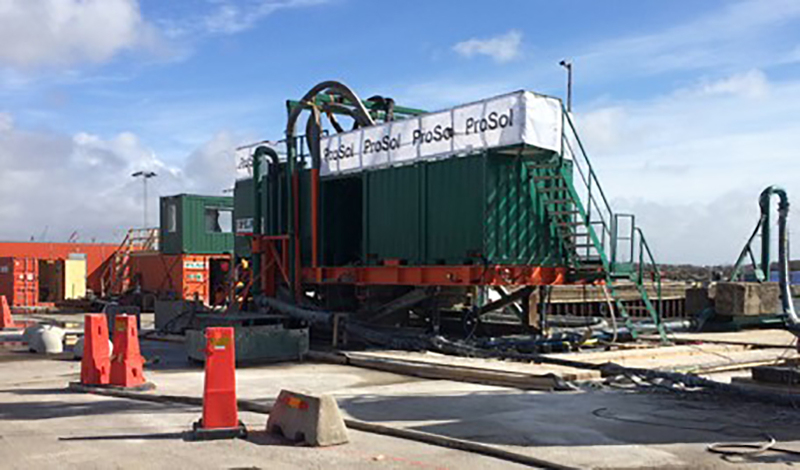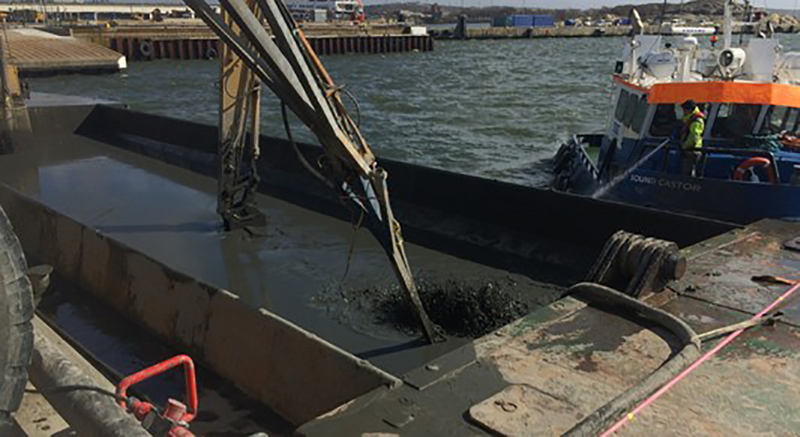Use in civil applications
Planned expansion in Gothenburg Port will stabilise up to 1,000,000 m3 of contaminated dredged sediments in two phases from 2018 to 2022. The sediment is contaminated with TBT, mean level in the order of 250 μg/kg dry solids. The dredged sediments will be mixed with hydraulic binders to provide structural strength and minimise leaching of TBT, for re-use as fill to expand the surface area of the port by 200,000m2.
A preliminary laboratory evaluation1 of candidate hydraulic binders: ordinary Portland cement, ground granulated blastfurnace slag (GGBS) and coal tar ash, was carried out to determine the most suitable binder combination for the full-scale project. The laboratory testing concluded that the GGBS binder contributed most to reduction of leaching of TBT and reduction of pH. Two candidate binder recipes were then selected for full-scale evaluation in a field trial2,3, which commenced in April 2017. These were a GGBS:cement mix (50:50), and a GGBS:cement:ash mix (25:50:25).
Process stabilisation was used where the sediment was pre-mixed with the stabilising binders before placement in the field. Mixing was carried out in a specialist mixer4 that mixes the wet sediment with the binder pastes, where mixes are pumped in to a cylindrical drum under high pressure. The energy of the pumping is sufficient to generate a homogenous mix of the sediment and the binders. The sediment/binder mix was pumped from the mixing plant to the placement lagoons 600 m distant (bounded by sheet pile walls). The mix was placed under water. Placing tempeature was 5 OC, and after activation and hydration of the binder, the internal temperature of the system rose to 14O C, and thereafter remained at 14O C.
Seismic p-wave measurements of in-situ strength at 28 days give the 50:50 GGBS:cement strength of 300 kPa, whilst the GGBS:cement:ash mix is in the order of 60 kPa. The design strength of the stabilised sediment is 70 kPa.
Graphical information:


References/web links
- Laboratory study: “GÖTEBORGS HAMN AB, ARENDAL 2 FÄLTFÖRSÖK– SLUTRAPPORT LABORATORIEFÖRSÖK: BINDEMEDELSRECEPT FÖR STABILISERING OCH SOLIDIFIERING AV MUDDERMASSOR, COWI Gothenburg, Kristina Bernstén, Anna Wilhelmsson, February 2016
- Field Trial Project: https://www.portofgothenburg.com/news-room/news/dredging-spoils-used-to-build-new-freight-terminal-at-the-port-of-gothenburg/
- Video of field trial: https://vimeo.com/216844512 (password: kunder22)
- Mixing technology: http://www.peabgrundlaggning.se/sv/Produkter--Tjanster/Solidifiering/